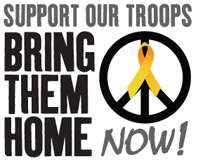Across the River, Part II
--Jungle Warfare Training Center at JWTC
(Camp Gonsalves, Okinawa)
When we're on the march we march single file,
far enough apart so that one shot
can't go through two men
--Major Robert Rogers (1759)
__________________
(Camp Gonsalves, Okinawa)
When we're on the march we march single file,
far enough apart so that one shot
can't go through two men
--Major Robert Rogers (1759)
__________________
This post is the follow-on to "Across the River".
First, the winner of "Across the River" contest: ANON. Anon, please send us your mailing address [to: admin-at-rangeragainstwar-dot-com] and we will post your prize to you. (FDChief wins Honorable Mention hands down, but we figured his knowledge is so encyclopedic his library so full that would already have the prize book.)
Ranger chose the photo for critique because it was so Hollywood. (Above is a similar photo from the magazine, "Special Forces -- America's Elite.")
The main failure was the dispersion of the soldiers: One booby-trapped 81 mm mortar round would take out three men. After all of the IED deaths in the Phony War on Terror (PWOT ©), while do our men still bunch up and present a valuable target outline?
If this is a combat patrol, the troops are traveling light, and their weapons discipline is negligible.
Personal preference: I do not like gloves even in a jungle -- what do you do when someone gets wounded? Where is the Individual Combat Compress? Where are the night vision goggles? (Didn't we learn anything in Mogadishu?) It is correct procedure to carry the devices even if it is a daytime action since becoming pinned down and fighting at night may become an eventuality forced upon a patrol by an enemy action.
Further, it seems ridiculous to have a $1,500 ACOG optic sight on a battle rifle when it is used at ranges less than 75 meters -- do these troops not feel proficient in close quarters combat? Do they not use instinctive shooting?
Why does the lead trooper not have his finger in a ready-to-fire position? Why is his weapon pointed away from his visual sweep? Where are their grenades? Radios?
There is much to this topic, and it is difficult to make comments from a simple photo. But even civilians know that bad things happen to slack soldiers when crossing water -- think Bridge on the River Kwai, Longest Day, A Bridge Too Far, Band of Brothers, etc. Simply, a water obstacle is always a danger area and must be treated as such.
The photo from the new Special Forces magazine depicting small unit tactical skills is abominable:
- There is no all-around security
- No Tailgunner
- No dispersion
- No staggered dispersion
- One round would get them all
When the Kachin Rangers, Merrill's Marauders or Carlson's Raiders bunched up crossing rivers, they had far security and were using speed to lessen the danger. Why would the Jungle Warfare Center teach soldiers to bunch up, as in this photo?
Have we lost our basic soldiering skills? If our Special Operations Command types ignore the old rules then we should reevaluate what the word "Special" signifies.
This post outlining the importance of enlisting one's skills when crossing danger areas may be an exercise in futility, but it was done in order to keep Major Rogers from turning over in his grave.
Labels: army unit training, failure in special operations training, major rogers, river crossing, rogers rules for rangers












2 Comments:
kewl post
The description of this picture says it's from some kind of O-course. So I'm not sure what the hell the thing is but my guess is that it's not supposed to be tactical.
Why they have their battle rattle on is a mystery to me, then, but that's the Marines for ya...
Post a Comment
<< Home